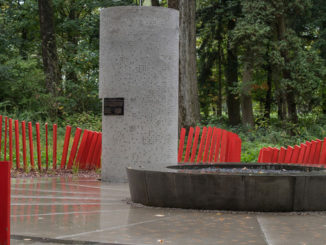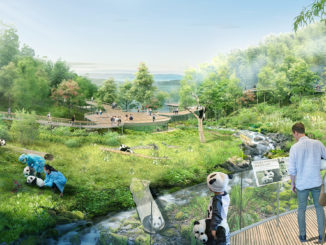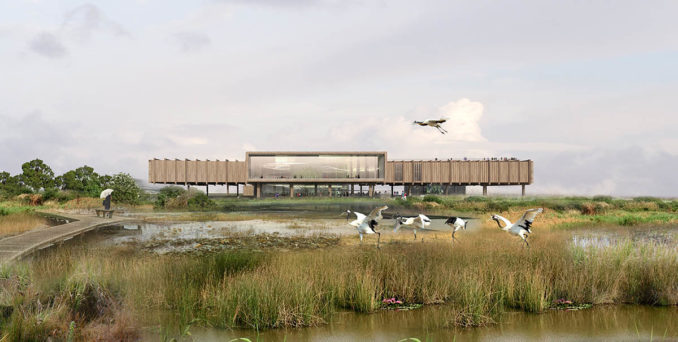
Hassell’s proposal for the Shenzhen Mangrove Wetland Museum integrates the dual functions of “park & museum”. The “park” is envisioned to completely cover the area and maximise the habitat potential of the site. It is a living exhibition space, a wetland at work.
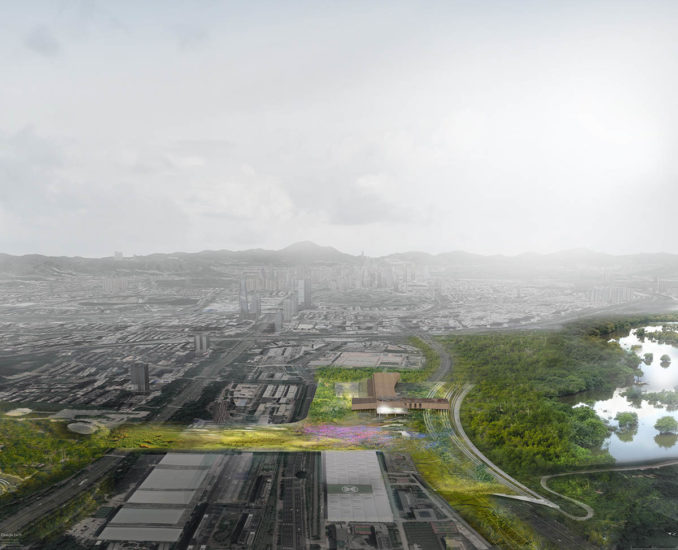
The “museum” building is deliberately placed and specifically oriented within this landscape and delicately perched above to observe its surroundings, reminiscent of a bird hide. In the foreground the wetland birds forage and wade in the shallow water, the mangroves silently protect and cleanse and in the distance the natural spectacle of the migratory birds and the Bay. The landscape connects the mountain to the sea, simultaneously celebrating and protecting the Mangrove Reserve and its important ecosystem functions.
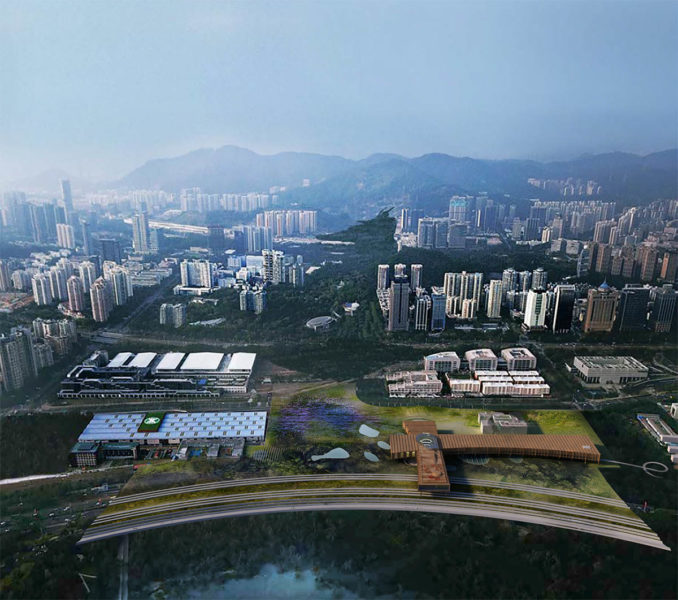
The Shenzhen/Deep Bay is an estuarine area comprising a variety of species-rich habitats, including freshwater wetlands, intertidal mudflats, mangroves and a series of man-made habitats – fish ponds, tidal shrimp ponds (gei wai) and oyster farms. A thick belt of coastal mangroves encloses these sites.
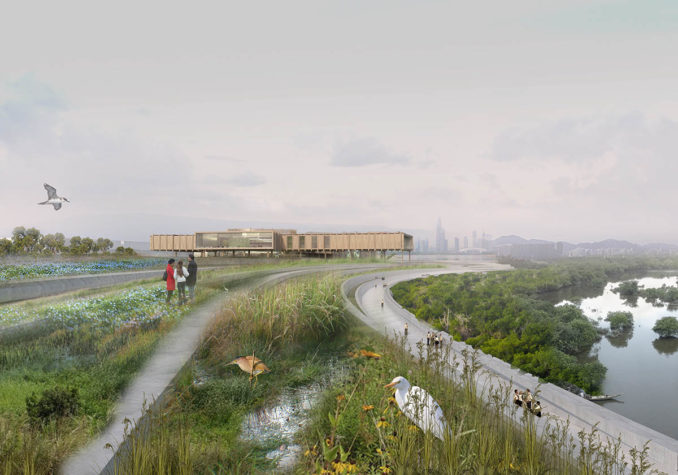
The Shenzhen Mangrove Wetland Museum site is an ecological gateway to the Mangrove Forest – Mountain to Sea Corridor. It is uniquely placed to create a new ecological setting, and provide an important ecological link between the existing diverse coastal habitats of the Bay. The museum site plays an important role in protecting the Bay and its wildlife including 100,000 migratory birds.
Perched above the wetlands
The proposal utilises the sites existing dramatic level change to create a new coastal edge to the Bay that will be a multi-layered habitat and public space. The parkland covers the existing deck with a combination of species-rich marshland, wet meadows and open water.
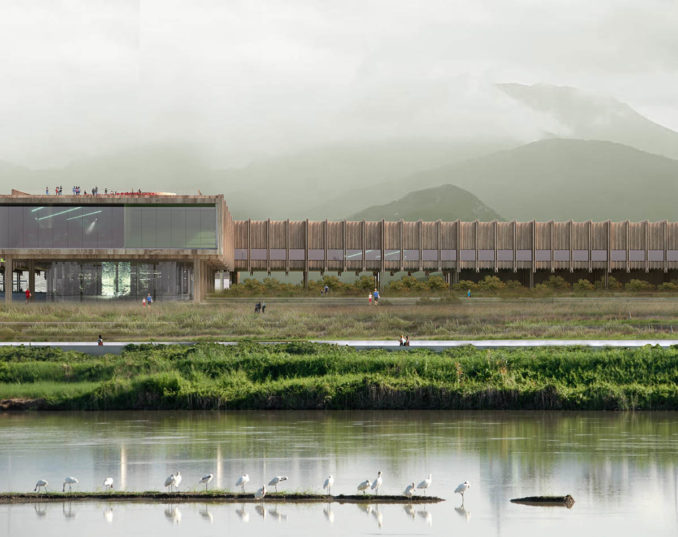
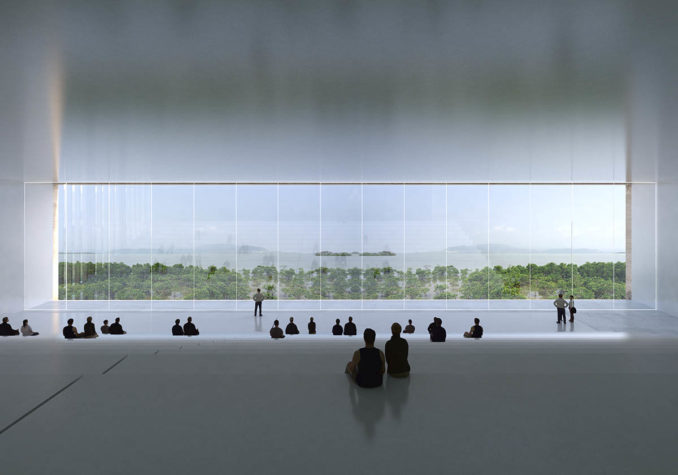
The “museum” building is placed within this landscape and perched above to observe its surroundings. Its elevation offers a series of viewing experiences – park entrance (within), museum floor (perched, floating) and rooftop (expansive). The building orientation is structured around the concept of “Two Axis, Four Windows”, maximising the key views – North-South: Mountain – Sea, East-West: Flower Sea Park – City.
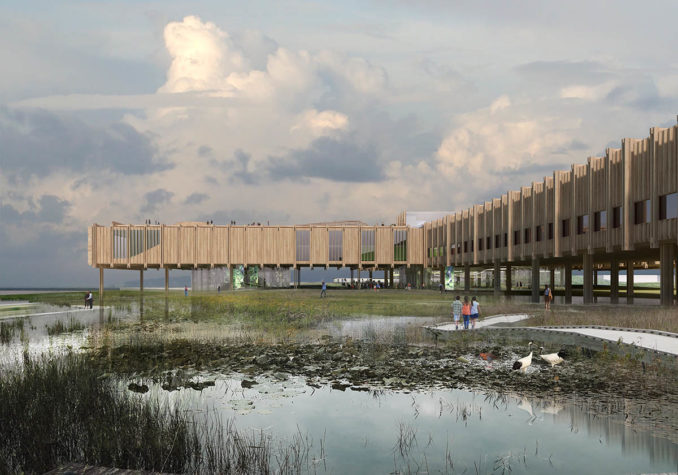
The terraced amphitheatre and Mangrove edge promenade creates an expansive viewing area for both the Mangrove Nature Reserve as well as the wider Bay. The continuous east-west promenade creates a generous walkway hovering alongside the mangrove reserve and this edge serves as a protective buffer for the fragile Mangrove ecosystem.
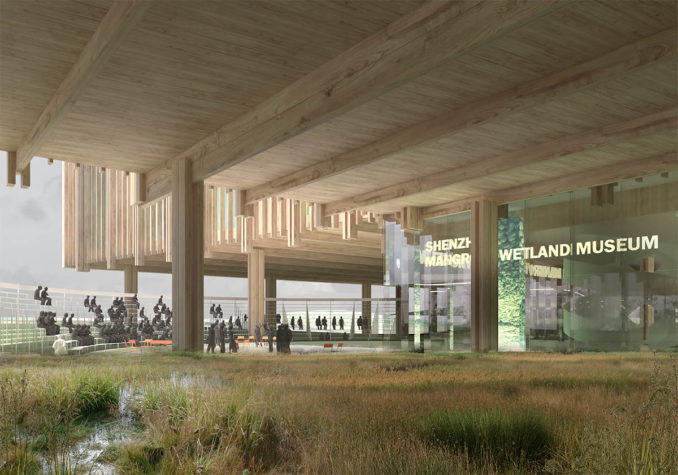
Restoration, integration, diversification
The Hassell proposal respects the ecological setting of the Mangrove Reserve and the Mountain to Sea Corridor. It creates an expansive new freshwater wetland habitat, restoring one of the Bay’s original ecologies and providing valuable habitat for the bird species within the Bay.
By removing the boundaries between city, building and ecology, the proposal integrates nature and architecture, transforming the site into a diverse, connected habitat and vibrant cultural space.
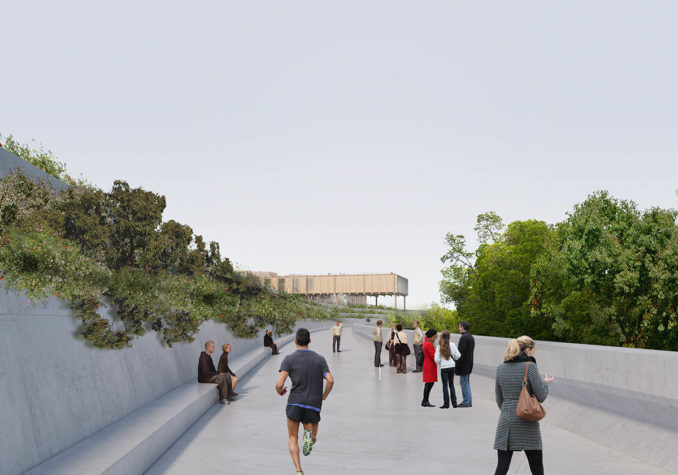
The museum site integrates the dual functions of “park & museum”. The “park” is envisioned to completely cover the site area and maximise the habitat potential as a living exhibition space. The “museum” building has been deliberately placed within this landscape and perched to observe its surroundings. This structure expands the possibilities for education, leisure, and culture.
The museum is perched over the expansive wetland that defines a new green edge to the Bay. This ecological icon will have a symbiotic relationship with the Bay, protecting the existing mangrove ecosystem and creating a new parkland for the Bay’s water birds.
Shenzhen Mangrove Wetland Museum
Location: Shenzhen, China
Design Firm: Hassell
Image Credits: Hassell

